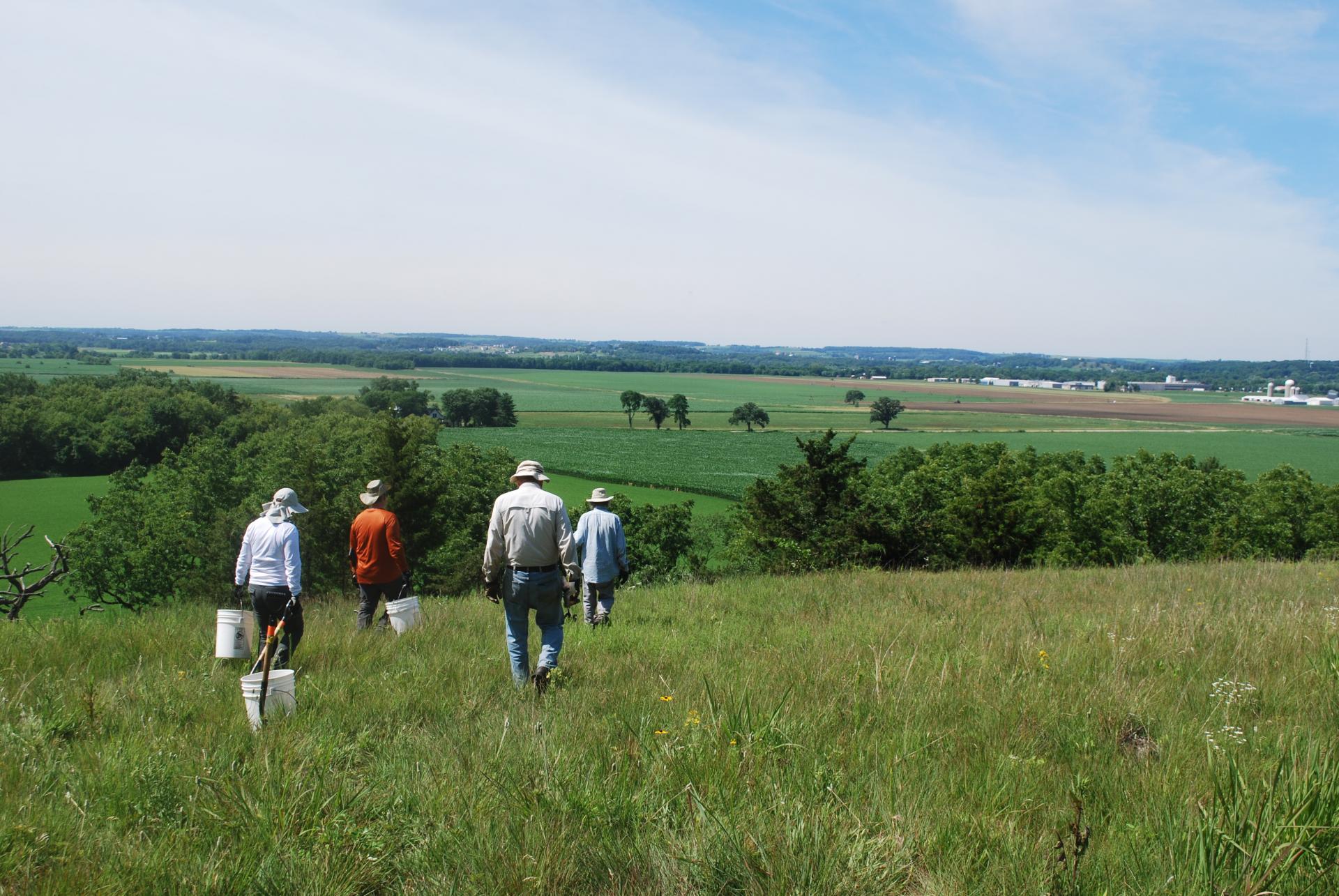
Restoring the original American landscape
Many of Slipstream’s employees take our mission to heart and live it out in their everyday lives. Melanie Lord, project manager, is someone who does just that. Her passion for restoring some of Wisconsin’s beautiful prairies to healthy ecosystems is a tangible extension of her work at Slipstream where we’re focused on reducing the environmental footprint of our energy use. This is her story.
"I spend many of my weekends with a small group of volunteers working on oak savanna and goat prairie restoration projects in Dane County along the Ice Age National Scenic Trail.
Oak savannas are an open landscape. There are some trees, but though they are the most obvious plants, they aren’t the dominant community: grasses and herbaceous plants growing under the trees dominate. Goat prairies, or hill prairies, are dry prairies, dominated by grasses and low-growing herbaceous plants, typically found on south-facing slopes.
At the time of European settlement, Midwestern oak savannas stretched from the eastern edge of the Great Plains in Texas up into southern Canada. Goat prairies could be found in the Driftless Area (unglaciated region) of Wisconsin, Minnesota, Iowa and Illinois. Now, oak savannas are listed as “globally imperiled” and goat prairies are “globally rare.” Yet there are restorable remnants of both landscapes.
Oak savannas and goat prairies are both fire-dependent landscapes and prescribed, or controlled, burns are one management tool. But before we can bring fire back to these landscapes, we need to remove the invasive trees, shrubs and plants that outcompete our native species. We remove trees and shrubs in fall and winter. In our oak savanna restorations, we remove black walnut, hackberry, box elder, buckthorn, prickly ash and honeysuckle to give the open grown oaks some breathing room and open the canopy so native grasses and forbs can grow. On our goat prairies, we remove red cedar, aspen and sumac. Often, we find remnant savanna and prairie plants once we’ve removed the invasive plants. But we help them out by planting native seeds: big and little bluestem, side oats, leadplant and prairie clover on our goat prairies; woodland brome and bottlebrush grass, hyssop and Joe-pye weed in our oak savannas are just a few of the species we’ve planted.
Spring is burn season and hectic—fickle weather and a limited pool of qualified volunteers who can be available on short notice makes planning and executing controlled burns a challenge. But fire stimulates the growth of native savanna and prairie plants and helps control the invasive species.
After burn season and into summer, just like you might in your home garden, we weed. Our focus in late spring is garlic mustard. We raster the woods and savannas abutting the prairies and beat our way through briar patches and honeysuckle thickets to destroy the plants before they set seeds. Then we turn our attention to the prairies—digging out burdock, curly dock, parsnip, mullein and yellow and white sweet clover.
Landscape restoration is incredibly satisfying work. I spend my weekends outdoors doing physical work that makes a difference that I can see. In the nearly 20 years I’ve been working on prairies and savannas, we’ve sown 140 acres of prairie, rescued at least seven remnant goat prairies, restored several oak savannas and even made a dent in the garlic mustard population."
Do you want to get involved? Below are links to various volunteer opportunities in Dane county.